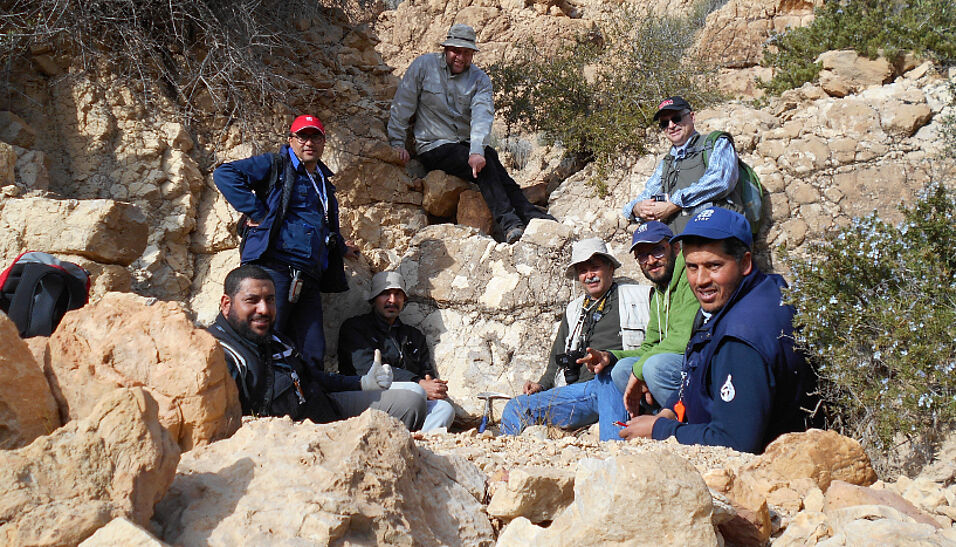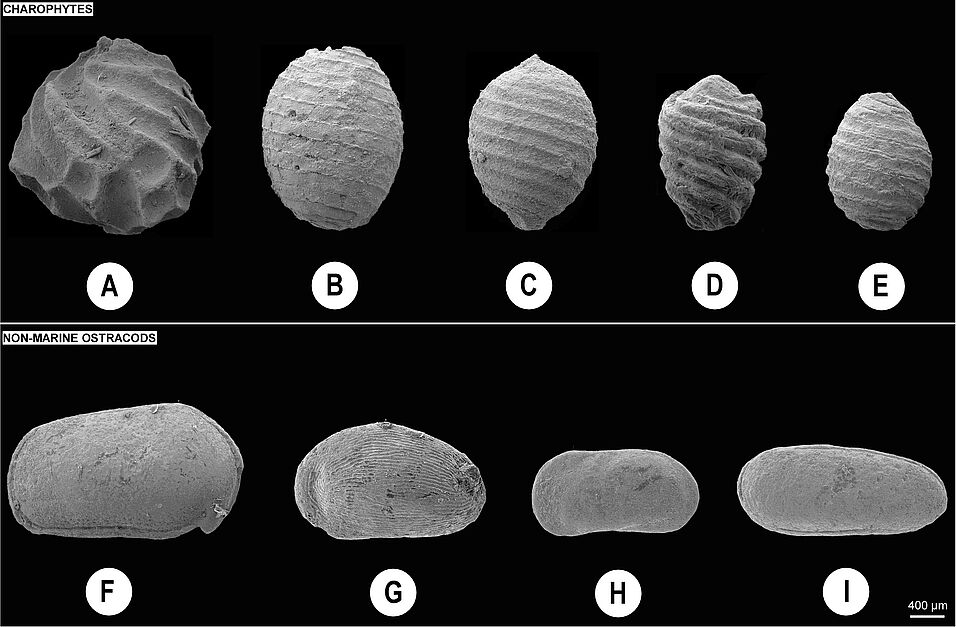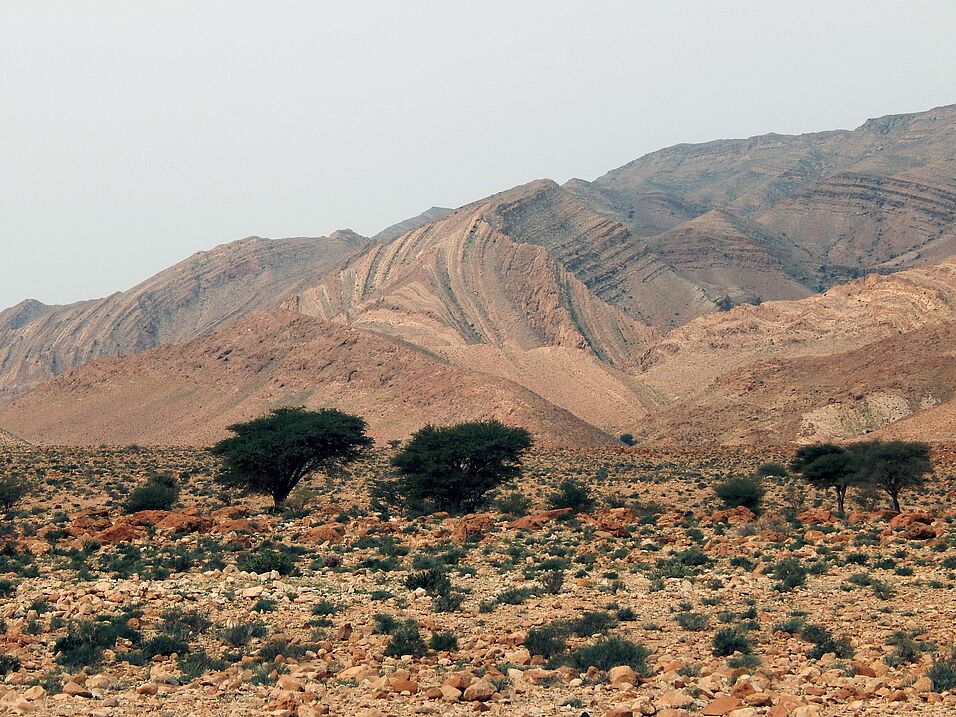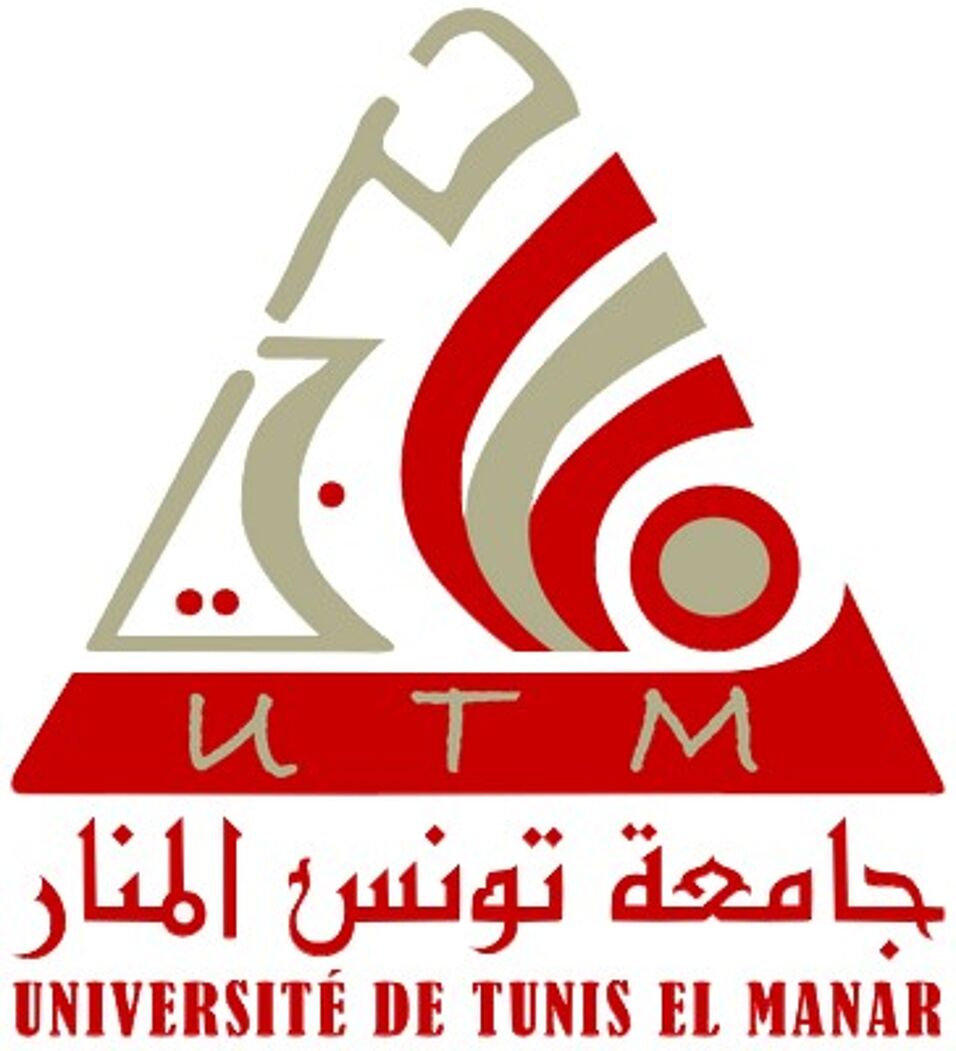In February 2017 scientists from Tunisia and Austria organised their first joint field trip to localities in the southern Central Tunisian Atlas. Their aim: To identify, date and document non-marine deposits on a Cretaceous island shore, some 120–105 million years back in Earth history. The palaeontologists and geologists were getting their hands dirty on rock, climbing sections, following the succession of layers and collecting rock samples with microfossils, when Yassine Houla, geologist of the National Office of Mines of Tunisia, summoned the team to show them a dinosaur footprint.
Michael Wagreich, professor at the Department of Geodynamics and Sedimentology in Vienna, is happy to announce as of late the smoothest and swiftest “Agreement on Scientific Collaboration” he had been involved in so far, and is proud of its successful and promising start. It took the scientists only four months to prepare for and get accomplished a contract between the Faculty of Earth Sciences, Geography and Astronomy of the University of Vienna and the Faculty of Science of the University of Tunis El Manar. For the next five years it will promote close collaboration between Austrian and Tunisian colleagues, and field work in the unique and not yet well researched sites in Tunisia. The agreement is fundamental for setting up common research projects and further third party funding, and will cut red tape for improved scientific exchange.
The agreement emanated from a scientific collaboration that dates back to 2012, when Khaled Trabelsi, a Tunisian micropalaeontologist, asked Benjamin Sames for help with certain microfossils from the southern Central Tunisian Atlas Mountains. Microfossils such as Ostracods (mussel shrimps) and Charyophytes (stoneworts) are used as index fossils to date and correlate geological strata. Sames is a Post-Doc at the Department of Geodynamics and Sedimentology and renown specialist for non-marine microfossils, namely non-marine ostracods of the Mesozoic (‘dinosaur’) period of Earth history. This collaboration lead to a joint publication in 2015, the first one in a series of papers in preparation.
Benjamin Sames: “We extended our scientific cooperation, professors Mohamed Soussi (Tunis) and Michael Wagreich (Vienna) got involved, and in 2016 I invited Khaled Trabelsi over for the first time to analyse microfossil samples with our scanning electron microscope and to prepare further joint publications. During our joint field trip in 2017, we all got to know each other personally and could substantiate projects and collaboration”.
Stepping Stone between Gondwana and Eurasia
The Central Tunisian Atlas might have been an island in the western Tethys Ocean during the Early Cretaceous that was then flooded by major sea-level rises in the mid-Cretaceous (~120–90 million years ago). “Our finding contributes to several central research issues. This Peri-Thetyan island might have served as a potential land bridge to the Saharan Platform to the south, which was not covered by the ocean“, says Benjamin Sames. Further research could reveal biogeographical developments of Gondwana and the function as a stepping stone for migration and dispersal of non-marine species between the big southern continent of Gondwana and Eurasia.
Lessons from the past on greenhouse climate
Michael Wagreich is a specialist for Cretaceous geology, including cyclic sea level and climate fluctuations, as well as marine nanofossils. He is interested in the extent and timing of sea-level changes during the period with the highest global sea level in Earth history, some 250 meter above current sea level: “Those were times of extreme greenhouse climate and we hope to learn from the past for our future under a changing climate. We might face a comparable sea-level rise in the near future through global warming again and so we are interested in the rates of change and corresponding carbon dioxide levels. We can contribute to models for the future by looking at the past”.
For at least five years researchers from Tunisia and Austria will pick up hard data, attract even more specialists, exchange expertise and equipment and use infrastructure together. The international collaboration to document the key sites is fostered by the prestigious International Geoscience Programme (IGCP), in Austria represented by the Austrian Academy of Sciences. Benjamin Sames was successful in acquiring initial funding from the Earth System Sciences Programme (ESS) in his 2-year project “Late Mesozoic lacustrine systems in Tunisia and their global correlation” (2017–2019). In this context, Yassine Houla (OMN) is leader of a recently approved project to geologically map the continental deposits of the region in detail.
IN A NUTSHELL
Agreement on Academic Collaboration
between the Faculty of Earth Sciences, Geography and Astronomy of the University of Vienna and the Faculty of Sciences of the University of Tunis El Manar in Tunisia; approved by Mid July 2017; duration: 5 years until July 2022, extension possible; scientific contacts: Michael Wagreich + Benjamin Sames (University of Vienna, Faculty of Earth Sciences, Geography and Astronomy, Department of Geodynamics and Sedimentology), Mohamed Soussi + Khaled Trabelsi (University of Tunis El Manar, Faculty of Sciences);
The agreement promotes close scientific collaboration between the Austrian and Tunisian teams, including joint field work in the Central Tunisian Atlas. Joint research will help to reconstruct palaeogeography, sea levels and greenhouse climate cycles in the western Tethys Ocean. The scientists share expertise, equipment and lab facilities.
Tunisian collaboration partners
University of Tunis El Manar, Faculty of Sciences: Mohamed Soussi, Khaled Trabelsi
National Office of Mines of Tunisia (ONM), Tunis: Yassine Houla
Entreprise Tunisienne d'Activites Petroliere (ETAP), Tunis: Faycel El Ferhi, Ahmed Nasri, Ahmed Skanji




